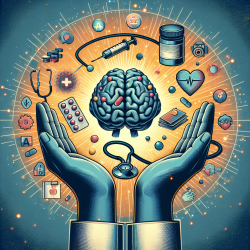Dr. Kennaway's research highlights several key points:
- Historical Context: The concept of musical hypnosis dates back to the late 18th century with Mesmer's theory of animal magnetism. Mesmer believed that certain sounds, like those from the glass armonica, could induce a hypnotic state.
- Physiological Psychology: The idea that music can cause automatic physiological responses, bypassing the conscious mind, has been a recurrent theme. This concept was central to the work of 19th-century figures like Jean-Martin Charcot and Ivan Pavlov.
- Modern Implications: The idea of musical hypnosis has evolved but remains relevant, particularly in discussions about the impact of music on behavior and mental states. The 20th century saw the rise of concerns about "musical brainwashing," especially during the Cold War.
Implementing the outcomes of this research in your practice can be highly beneficial. Here are some practical steps:
- Incorporate Music Therapy: Utilize music as a tool to help clients achieve a relaxed, focused state. This can be particularly effective for clients with anxiety or stress-related issues.
- Understand Client Responses: Be aware of the potential for music to trigger automatic responses. This understanding can help you better tailor your therapeutic approach to individual clients.
- Stay Informed: Keep up with ongoing research in the field of musical hypnosis and brainwashing. This will help you stay ahead of new developments and incorporate the latest findings into your practice.
Encouraging further research in this area can also be beneficial. By contributing to the body of knowledge on musical hypnosis, you can help develop more effective therapeutic techniques and improve outcomes for clients worldwide.
To read the original research paper, please follow this link: Musical Hypnosis: Sound and Selfhood from Mesmerism to Brainwashing.










